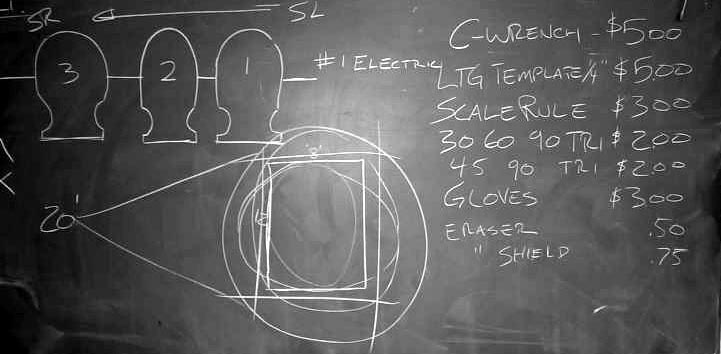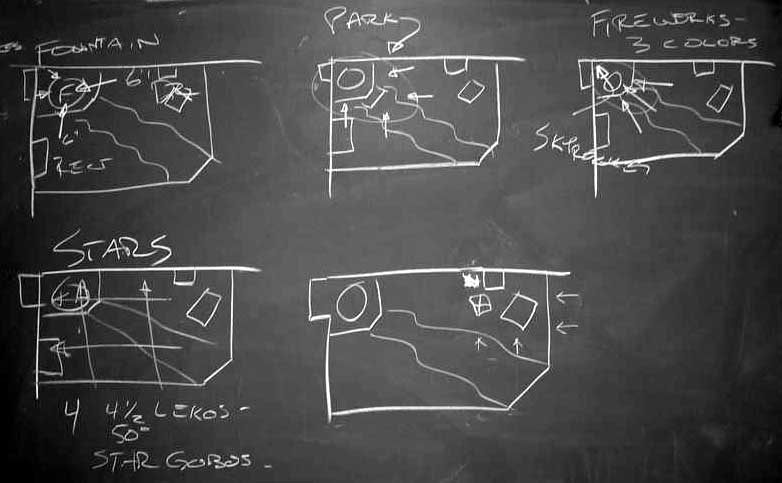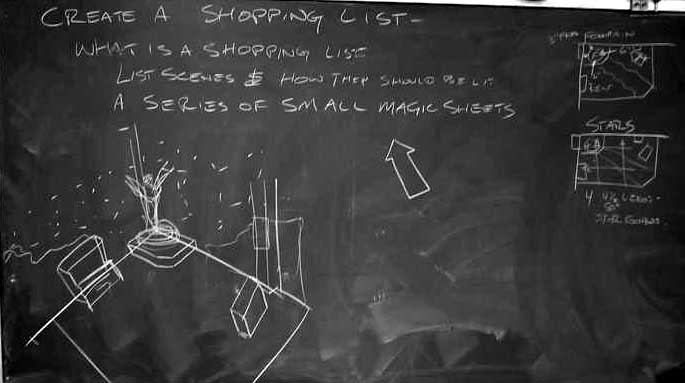From Wikipedia:Principles of Lighting
There are many general principles to lighting a stage, although to allow for artistic effect, no hard and fast rules can ever be applied. The principles of lighting include:
- Illumination: The simple ability to see what is occurring on stage. Any lighting design will be ineffective if the audience has to strain to see the characters; unless this is the explicit intent.
- Revelation of form: Altering the perception of shapes onstage, particularly three-dimensional stage elements.
- Focus: Directing the audience’s attention to an area of the stage or distracting them from another.
- Mood: Setting the tone of a scene. Harsh red light has a totally different effect than soft lavender light.
- Location and time of day: Establishing or altering position in time and space. Blues can suggest night time while orange and red can suggest a sunrise or sunset. Use of gobos to project sky scene, moon etc
- Projection/stage elements: Lighting may be used to project scenery or to act as scenery onstage.
- Plot: A lighting event may trigger or advance the action onstage.
- Selective visibility: Lighting may be used to show only the areas of the stage which the designer wants the audience to see.

Qualities of lighting
In the pursuit of these principles, the four main qualities or properties of interest are:
- Intensity: Measured in both lux and lumens. For any given luminaire (lighting instrument or fixture), this depends upon the power of the lamp, the design of the instrument (and its corresponding efficiency), the presence or absence of color gels or gobos, distance from the area to be lit, the color and substance to be lit, and the neuro-optics of the total scene (that is, the relative contrasts to other regions of illumination).

- Color: Color temperature is measured in Kelvin, and gel colors are organized by several different systems maintained by the color manufacturing companies. The apparent color of a light is determined largely by the gel color given it, but also in part by the power level the lamp is being run at and the color of material it is to light. As the percentage of full power a lamp is being run at drops, the tungsten filament in the bulb glows orange instead of more nearly white. This is known as amber drift or amber shift. Thus a 1000-watt instrument at 50% will appear far more orange than a 500-watt instrument at full.




